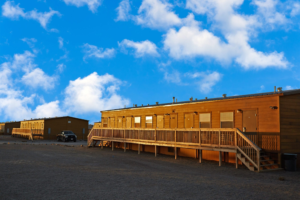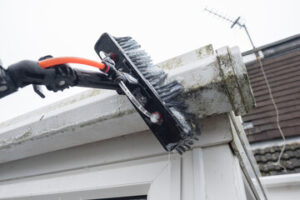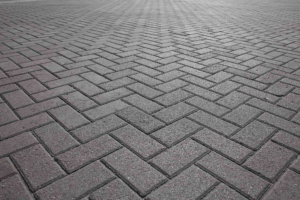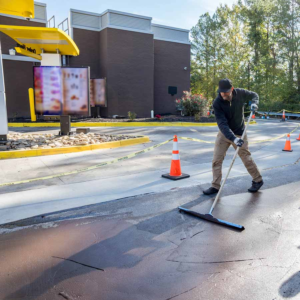Traveling workforces require lodging solutions that can adjust to their ever-changing needs. The comfort and convenience of housing options can greatly impact workers’ performance while in the field.
Workforce lodging solutions can include temporary overnight accommodations for remote camps and campuses. Attend CLC Lodging’s upcoming webinar to learn more about streamlined options for workforce lodging. Visit Our Website to learn more.

For remote worksite residents, the site isn’t just a place to conduct business; it’s their home. That’s why it’s important to provide a range of amenities that make for an exceptional living experience.
The right accommodations can help to improve morale, boost worker productivity, and increase job satisfaction rates. Proper housing in remote locations should provide a comfortable, functional workspace and recreational facilities for workers to relax and socialize with fellow crew members.
For instance, onsite fitness centers and communal areas for team building can promote healthy lifestyles, enhance job satisfaction, and foster camaraderie among remote worksite residents. Additionally, food catering services can provide nourishing, diverse meals that keep employees energized throughout the day.
Lastly, reliable high-speed internet is a non-negotiable amenity for remote worksite residents. Workers need access to the internet to communicate with clients, collaborate on projects with coworkers, and complete daily tasks. Ensure that your remote worksite lodging offers high-speed internet with sufficient bandwidth to support multiple devices at once and test it regularly for speed and reliability.
A scalable workforce accommodation management system can support the operations of even the largest camp or lodge. For example, SmartLodge provides teams tasked with overseeing accommodations, food service, and guest management with an integrated software solution that can streamline occupancy optimization, cost allocation, and invoicing. This provides a significant ROI for open camps that serve a mix of individual workers seeking short-term housing or crews requiring overflow accommodations.
Safety & Security
Workforce lodging solutions must be designed with crew safety and security in mind. From restrooms to shower trailers, crews must have access to essential hygiene facilities to stay healthy on the jobsite. Whether it’s attached bathrooms within living quarters or bunkhouse-style shower trailers, workforce housing sites should include amenities that keep crews clean and productive throughout their stays.
For companies with complex travel patterns, it’s crucial to implement a workforce lodging program that provides control and savings. A comprehensive program can help protect the investment in employee travel even when the economy is down.
A streamlined lodging program can simplify what is typically a chaotic and costly reservation, reporting and reconciliation process. CLC Lodging, America’s workforce lodging leader, provides a full suite of streamlined tools that provide added control over hotel spend including customized hotel directories and rooming lists, project coding on the lodging invoice, and centralized audited reconciliation.
CLC also offers a lone worker safety solution, SafetyLine, that empowers workers to proactively check-in with a designated contact, signal an emergency via motion features such as man-down and fall detection, discreetly alert coworkers of a panic alarm, leverage satellite device integration if out of cell range, and more. Learn more about CLC’s scalable solutions during the BIC webinar on September 16. Register now.
Recreational Facilities
The health and wellbeing of workers is a priority for workforce lodging solutions, and a comfortable living space can have a direct impact on work performance. Providing top-quality amenities, like recreational facilities and dining areas, allows employees to rest and relax after work, reducing stress and fatigue. These features can also encourage teamwork and a sense of community amongst employees, increasing productivity and morale.
In addition to high-quality amenities, a good workforce lodging solution should provide convenient access to healthy and nutritious food. A variety of meal options is essential, including dietary accommodations, and meals should be provided on a regular schedule to maintain energy levels. The ability to cook in the worker’s own housing unit is a great advantage, as it can help reduce reliance on costly restaurants and cafeterias.
Workers also need to be able to recharge and stay focused in order to perform their best at work. Uncomfortable sleep environments, lack of privacy, and limited storage can negatively impact their mental and physical state. By implementing robust wellness measures, including exercise and recreation programs, as well as medical support services, workforce lodging can improve employee comfort and performance.
A workforce lodging solution should be scalable, enabling it to expand or contract to match the size of an on-site project. This flexibility is critical when working in volatile industries like oil and gas, where workforce numbers can fluctuate significantly over the course of a project.
In addition, a scalable workforce lodging program should provide advanced tools to optimize travel spend and increase control of budgets. These include reservation management, hotel invoice coding and reconciliation, streamlined expense reporting and a 24/7 skilled support team. A consolidated, single provider can offer these and other benefits at a lower cost than developing these solutions in-house.
The next generation of workforce lodging will be more sustainable and adapted to difficult locations. Modified shipping containers, for example, are an excellent option for remote areas because of their durability and a small footprint. In the future, workforce lodging will be even more important to businesses as they seek ways to do their jobs in more challenging environments. At Prefabex, we’re looking forward to making workforce lodging better, so that it can be healthier and safer for workers to live in.
Environmental Sustainability
Proper housing for workers is essential to ensuring a comfortable and productive stay. In addition to meeting health and safety standards, workforce lodging solutions should address the environmental impact of their operations. In doing so, they can minimize the use of resources and improve the environment in areas where they are located.
Sustainability initiatives are often more costly than non-sustainable alternatives, but they can still be affordable if companies focus on the long-term benefits of implementing these programs. Pamela Weinstein, assistant director of sustainability programs at SNHU, points out that “the costs are worth the investment in terms of both economic and ecological stability.”
In her book, The Road to Sustainable Business, author Laura Levenson emphasizes that incorporating environmental sustainability into a company’s business strategy allows for greater profitability. She argues that sustainable companies are viewed as a desirable brand, and customers prefer to patronize these businesses due to their environmentally responsible approach.
Investing in sustainability also leads to cost savings for hotels. For example, implementing energy-efficient lighting and HVAC systems reduces electricity usage. Similarly, water conservation measures reduces utility bills by lowering water consumption and sewer fees. And, waste management programs lower disposal costs by diverting materials away from landfills.
Finally, sustainability initiatives are a great way to promote employee morale. In addition to demonstrating a company’s commitment to the community, these programs can foster a sense of pride and loyalty among staff members. This can lead to higher retention rates and lower recruitment costs.
In conclusion, companies that require workforce accommodations can meet their sustainability goals through centralized housing and man camps that prioritize eco-friendly practices. Such accommodations are designed to protect the health of their employees and provide a positive work environment, while minimizing the need for resource extraction. This enables businesses to fulfill their responsibility to leave communities as healthy as or healthier than they were before their project began.
Weichert Workforce Mobility’s team of experts can help you design an effective workforce lodging solution that addresses your needs and meets environmental standards. Contact us today to discuss your project.








